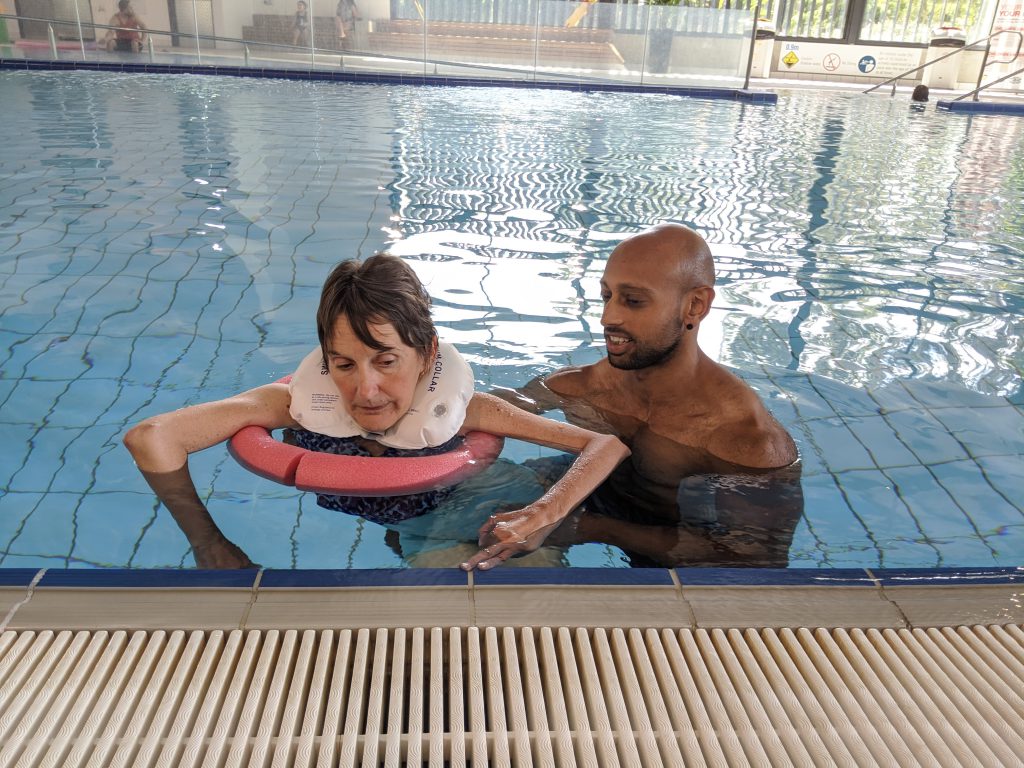
Hydrotherapy, also known as aquatic physiotherapy, is a physiotherapy treatment that uses water to help people recover from injuries or improve their overall health and fitness. It is a safe and effective way to exercise, especially for people who have difficulty exercising on land due to pain or limited mobility.
How does hydrotherapy work?

The water in a hydrotherapy pool is heated to a comfortable temperature, usually between 33 and 35 degrees Celsius. This warm water has a number of beneficial effects on the body, including:
- Pain relief: The warm water helps to relax muscles and joints, which can reduce pain and inflammation.
- Increased range of motion: The buoyancy of the water helps to support the weight of the body, which can make it easier to move joints through a full range of motion.
- Strengthening: The resistance of the water can be used to help strengthen muscles.
- Cardiovascular fitness: Hydrotherapy can be a low-impact way to improve cardiovascular fitness.
- Relaxation: The warm water and gentle exercise can help to promote relaxation and reduce stress.
Who can benefit from hydrotherapy?

Hydrotherapy can be beneficial for people of all ages and fitness levels. It is particularly helpful for people who have:
- Musculoskeletal injuries: Such as sprains, strains and fractures.
- Chronic pain conditions: Such as arthritis and back pain.
- Neurological conditions: Such as stroke, multiple sclerosis and Parkinson’s disease.
- Post-surgical rehabilitation: Hydrotherapy can help to speed up the recovery process after surgery.
- Pre- and post-natal care: Hydrotherapy can help to improve flexibility and strength during pregnancy, as well as reducing pain and swelling after childbirth.
How is hydrotherapy conducted?
Hydrotherapy sessions are usually conducted by a qualified physiotherapist. The physiotherapist will assess your individual needs and goals, and then develop a tailored exercise program for you. The exercises will be performed in the heated pool and may include:
- Walking: Walking in the water is a low-impact way to exercise the legs and improve cardiovascular fitness.
- Water jogging: Water jogging is a low-impact way to exercise the legs and improve cardiovascular fitness.
- Arm exercises: Arm exercises can be done in the water to strengthen the upper body.
- Stretching: Stretching in the water can help to improve flexibility and range of motion.
- Balance exercises: Balance exercises can help to improve balance and coordination.
How often should I do hydrotherapy?
The frequency of hydrotherapy sessions will vary depending on your individual needs and goals. Some people may need to attend sessions once a week, while others may need to attend more often.
Is hydrotherapy safe?
Hydrotherapy is generally safe for most people. However, there are some risks associated with hydrotherapy, such as:
- Infection: The warm water in a hydrotherapy pool can provide a breeding ground for bacteria. It is important to shower before and after each session to help prevent infection.
- Heat stress: The warm water in a hydrotherapy pool can cause heat stress, especially in people who are not used to exercising in hot environments. It is important to drink plenty of fluids and take breaks as needed to avoid heat stress.
- Water safety: It is important to be aware of the water safety rules when participating in hydrotherapy. This includes following the instructions of the physiotherapist and avoiding diving into the pool.
If you are considering hydrotherapy, it is important to talk to your physiotherapist to see if it is right for you.
